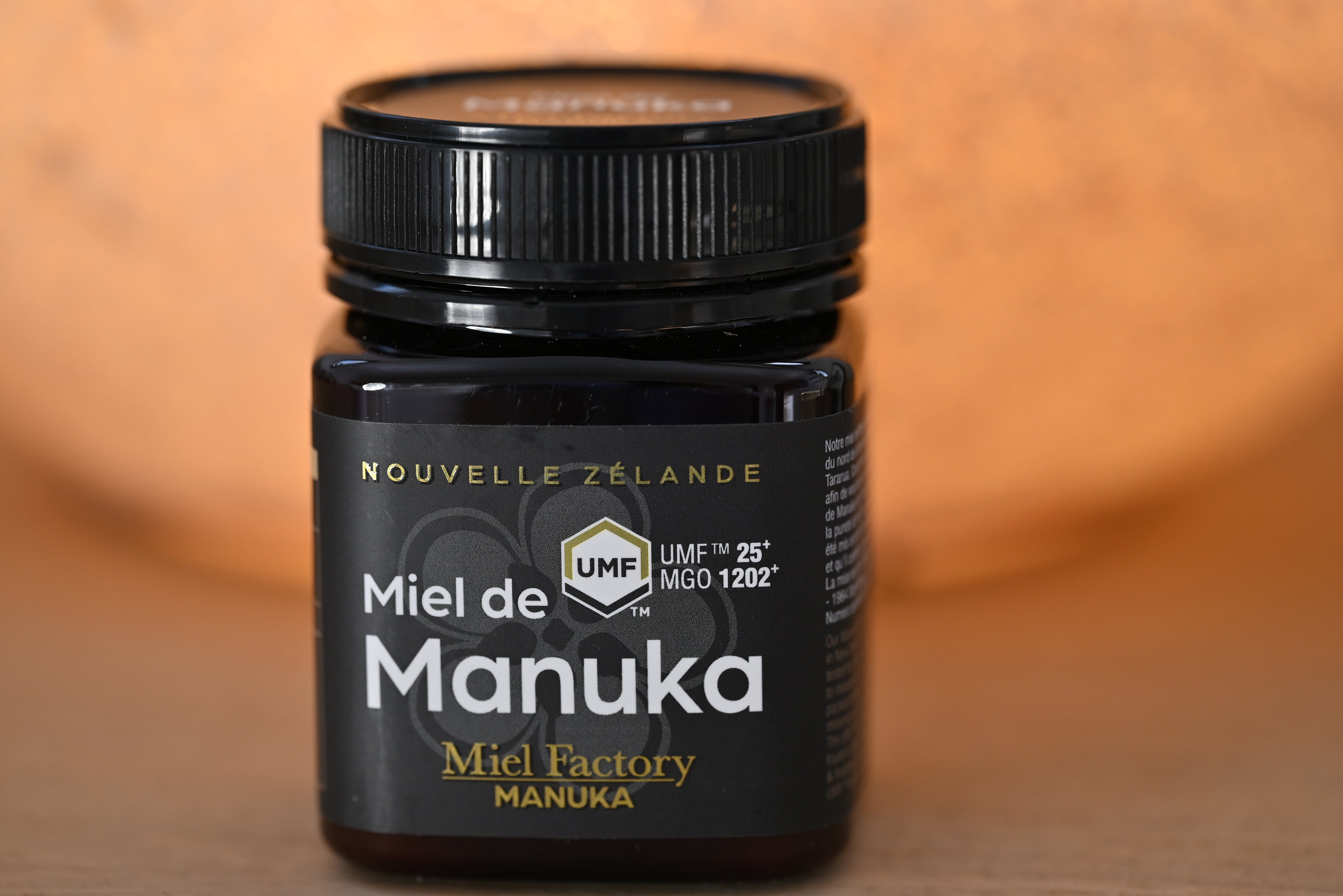Manuka honey is renowned for its unique properties and health benefits. But with all the certifications and different concentrations available, it can be difficult to navigate. Here is a guide to help you choose your Manuka honey wisely.

Understanding the indicators: MGO and UMF
When you buy Manuka honey, two key indicators guarantee its quality and effectiveness:
-
MGO (Methylglyoxal) : It is the active compound that gives Manuka honey its antibacterial properties. The higher its level, the more potent the honey.
-
UMF (Unique Manuka Factor) : This certification takes into account MGO as well as other natural markers of Manuka honey, such as leptosperin and DHA, to guarantee its authenticity and purity.
What is the difference between MGO and UMF?
MGO is the key to the potency of Manuka honey regarding its antibacterial properties. It specifically measures the amount of Methylglyoxal present in the honey, which is essentially the active element responsible for its health benefits.
The UMF, or Unique Manuka Factor, on the other hand, evaluates the overall antibacterial activity of Manuka honey on a scale from 5+ to 20+. The higher the UMF number, the more the honey is reputed to be active. The fundamental difference lies in the fact that UMF takes into account various factors contributing to overall activity, while MGO focuses specifically on the Methylglyoxal content.
Other labels and fake certifications
Besides MGO and UMF, other labels exist but are neither verified nor certified:
-
AAA : This label also assesses honey quality, but it is less strict than UMF.
-
NPA "20+" : it is not a certified standard, just a measurement. It is sometimes used alone to imply a guarantee, but without independent oversight (like UMF or MGO).
-
"Equivalent UMF" or "UMF-like": fraudulent names.
-
Unverified labels : Some honeys may display scientifically unrecognized names or lack official certification. It is therefore important to verify their authenticity before purchasing.
The traceability of Manuka honey
A true Manuka honey must be traceable from the producer to the consumer. We work directly with a New Zealand beekeeper and our honey is jarred on site in New Zealand to guarantee its authenticity.
Each batch of Manuka honey has a RMP number (Risk Management Program), which certifies that it was produced according to the strict food safety and traceability standards of the New Zealand government.

Which concentration to choose?
The choice of MGO and UMF concentration depends on the use you want to make of it:
-
MGO 100+ to 250+ : Ideal for daily consumption and general well-being. This level of MGO is ideal for those who want to discover the benefits of Manuka honey without extreme potency. It is often used to improve digestion, soothe the throat, and support the immune system. You can add it to your cup of tea or use it as a natural sweetener in your drinks.
-
MGO 250+ to 400+ : Suitable to support the immune system and minor everyday ailments. MGO 400 offers significant health benefits. It is recommended to strengthen the immune system, promote wound healing, improve skin health, and support digestion. It can be consumed directly, mixed into smoothies, or applied to the skin to help treat skin conditions.
-
MGO 400+ to 800+ : Recommended for more specific conditions, such as persistent sore throats or digestive problems.
-
MGO 800+ and above : Used in very specific cases, often for therapeutic purposes under medical advice. With a high level of MGO, Manuka honey is a true concentrate of antibacterial power. It is often used to treat more serious health problems, such as infections, infected wounds, and ulcers. This Manuka honey is a valuable asset to strengthen the body's resistance and fight bacterial infections.
The taste and texture of Manuka honey
Manuka honey has a atypical texture, thicker and creamier than other honeys.
Its taste is also distinctive: woody, slightly spicy, with a hint of bitterness which sets it apart from milder honeys.
Thanks to its unique qualities and scientifically proven benefits, Manuka honey is a valuable ally for your well-being. By choosing traceable and certified honey, you are sure to enjoy all its benefits!

How to read a true Manuka honey label?
Before buying, always check these 4 elements on the jar:
1. A clear certification
-
✔️ UMF™ (Unique Manuka Factor): the most comprehensive — certified by an independent New Zealand organization.
-
✔️ MGO™ : indicates the actual content in methylglyoxal (the active compound).
-
✔️ MPI Certified : guarantees 100% New Zealand origin, according to government criteria.
Reliable example:
- UMF™ 15+ = high antibacterial activity
- MGO 514+ = perfect for boosting immunity
2. Vague or unofficial clues?
-
⚠️ "Active Manuka", "NPA", "Bio Active", "AAA" without further indication = vague marketing
-
⚠️ No UMF logo or no proof of laboratory tests? Avoid!
3. The exact origin
-
The real Manuka comes only from New Zealand 🇳🇿
-
If it is "repackaged in Europe" or jarred in France or without origin specification → 🛑 caution.
4. Beware of the "cheaper"
Manuka certified is rare, hand-harvested, tested, and traceable.
A jar at 10–15€ with "Manuka" on the label? → Too good to be true.
In summary, if you want to be sure to buy effective and quality manuka honey you must:
1/ Choose a manuka certified MGO and UMF
2/ Choose a manuka honey that must be harvested AND jarred in New Zealand
3/ Choose a Manuka honey that is assigned an RMP number
4/ Choose a Manuka honey that has a creamy texture and an atypical taste (which will allow you to know if it is real or not)
With these criteria, you can be sure that your manuka honey will be genuine and effective.



